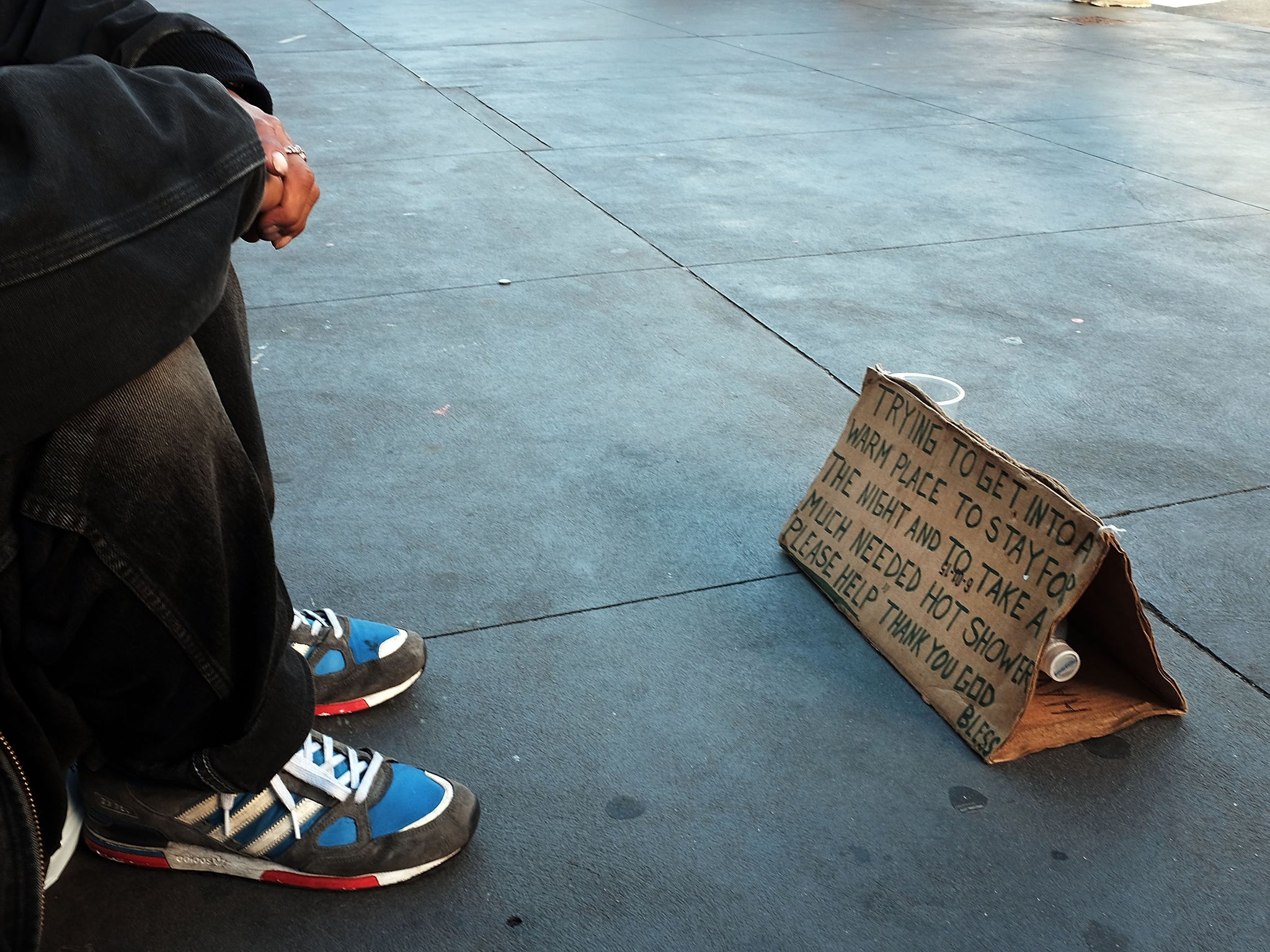San Francisco's homeless youths are 10 times more likely to die than their peers
The UC Berkeley study reveals the dangers of youth homelessness

Homeless youth in San Francisco have a mortality 10 times greater than their peers, due in part to suicide and substance abuse, a new study shows.
Researchers at the University of California, Berkeley, studied a group of 218 homeless youths between ages 15 and 24 over the course of six years, beginning in 2004. By the end of 2010, 11 of the youths had died.
“Street-recruited homeless youth in San Francisco experience a mortality rate in excess of ten times that of the state’s general youth population,” the study, published on Thursday in PeerJ, concludes. Researchers urge the state of California to establish more housing, mental health, and substance abuse intervention programs.
Lead author of the study, Dr Colette Auerswald, an associate professor of public health at UC Berkeley, attributes the results to the stigma that surrounds homeless youth in the region.
“This population is highly stigmatized. That stigma leads to neglect and, in turn, to increased mortality,” Dr Auerswald said. “All the deaths in this cohort were preventable.”
Bay Area homeless advocates see this study as evidence of the difficulties faced by the study’s subjects.
“These sobering data provide evidence of what homeless youth face when their only option is life on the streets,” executive director of San Francisco-based Larkin Street Youth Services, Sherilyn Adams, told Berkeley News. “We must not ignore or underestimate the gravity of homelessness or its tragic impact on young lives cut short.
“No young person deserves to die a preventable death because they didn’t get the help they needed.”
The study found that homeless female youth were likely to die at a rate higher than males, with a mortality rate 16.1 times higher than their peers.
“Being homeless is dangerous for everybody, but the social environment of the street is particularly treacherous for young women,” Dr Auerswald said.
According to data from the Department of Housing and Urban Development, approximately 1,378 homeless youth are on the streets of San Francisco, many of whom deal with family problems, drug addiction, or abuse.
The Journal of the American Medical Association published a study earlier in April that found that youth do not choose to be homeless. Factors like poverty, family conflict, and abuse led to life on the street. Researchers found that delinquency rarely factored in to the issue.
Dr Auerswald praised the study in a 4 April editorial.
“That study once again blew out of the water the myth that youth either choose to be on the street or are on the street because they are delinquents,” she wrote.
Homeless youth proved challenging to identify for researchers, particularly black and Latino who, according to Dr Auerswald, put considerable effort in concealing the fact that they are without homes.
San Francisco’s homeless white youth are most likely to participate in actions that identify them as homeless, such as panhandling.
Subscribe to Independent Premium to bookmark this article
Want to bookmark your favourite articles and stories to read or reference later? Start your Independent Premium subscription today.

Join our commenting forum
Join thought-provoking conversations, follow other Independent readers and see their replies